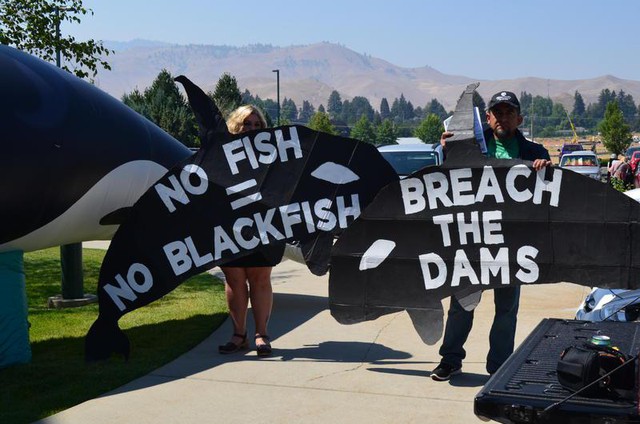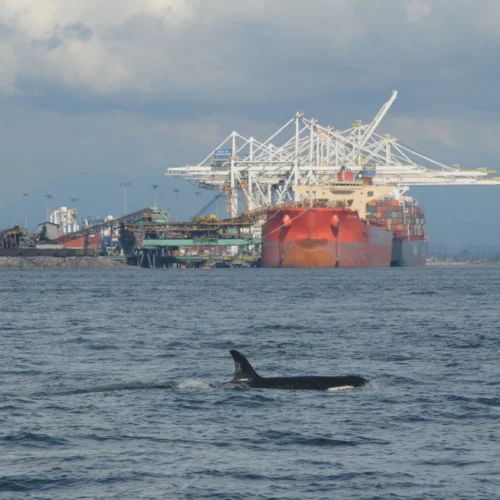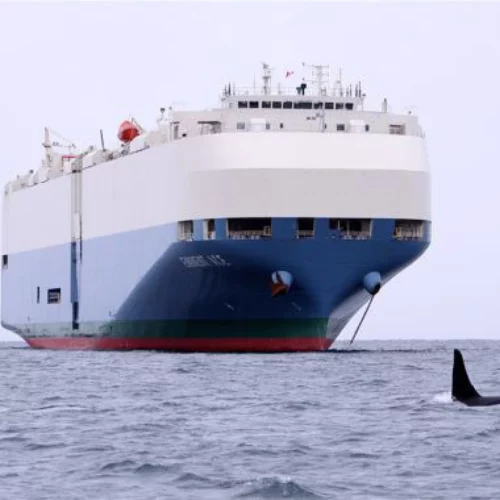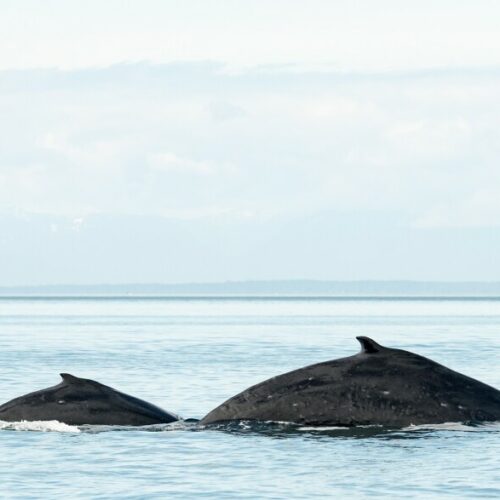
Can Washington Make A Plan To Save The Orcas?
Listen
In late July, an orca calf died within half an hour of its birth. The mother carried the dead calf on her head for more than a week.
Now whale scientists and NOAA are weighing trying to feed live Chinook salmonto an emaciated 4-year-old orca or trying to inject her with an antibiotic.
On Tuesday, the governor’s orca task force met in Wenatchee to come up with a long-term plan to help the recovery of the orca population that spends much of its time in or around the Puget Sound (known as the Southern Residents).
The mandate is to come up with recommendations by this fall that Gov. Jay Inslee can present to the legislature in 2019.
The task force is examining three main threats to the survival of southern resident orcas: vessel noise, pollution and the availability of chinook salmon, the only food these orcas eat.
Advocates for salmon and for orcas gathered outside the meeting to press for “bold actions,” including removing the four lower Snake River dams. The advocates delivered a petition calling for dam removal and other steps to the task force co-chairs.
But Kathy Pittis, with the Port of Anacortes, argued that the Snake River dams provide cheap, renewable electricity to nearly 2 million homes and that they do not block fish passage.
Dam removal isn’t the only controversial recommendation the task force has on the table.
It’s considering options that include further limiting the Chinook harvest in some places, reducing bycatch in other fisheries, and negotiating reductions in Alaskan and Canadian fisheries to allow more fish to reach Washington waters.
Both commercial and recreational fishers object to many of those recommendations.
The task force is also looking at establishing new speed limits, vessel-free zones and a permit system for whale-watching boats in order to cut in half the level of vessel noise that orcas are exposed to.
Other possible actions are more aspirational. Derek Day, with the state Department of Ecology, said one step that would help the orcas would be reforming the federal legislation regulating chemicals so that new chemicals would be tested before coming on the market and so that contaminants already in the environment would get cleaned up.
“That would be a moon shot,” Day acknowledged.
Copyright 2018 EarthFix
Related Stories:

Captains of big ships eased up on the throttle during trial slowdown to help endangered orcas
The majority of captains of big commercial ships entering and leaving Puget Sound are cooperating with a request to slow down temporarily to reduce underwater noise impacts to the Pacific Northwest’s critically endangered killer whales. The duration of the experimental slowdown – modeled on a similar project in British Columbia – will be extended into the new year, organizers announced after a status report and celebration on the Seattle waterfront Friday.

Reducing collisions between ships and whales? There’s apps for that, but they need work
Fortunately, it doesn’t happen very often in the Pacific Northwest that ships collide with whales. But when it does, it’s upsetting, tragic and the whale probably dies. Three separate teams have developed smartphone-based systems that can alert commercial mariners to watch out, slow down or change course when whales have been sighted nearby. A recent ride-along on a big container ship demonstrated that real-time whale alerts are still a work in progress.

Record Numbers Of Bigg’s Killer Whale Sightings And Humpback Calves In Salish Sea
Whale watchers have spotted a record number of humpback calves in inland Pacific Northwest waters this season. There was also a record streak of Bigg’s killer whale sightings that just ended, according to a local whale research nonprofit. Those observations offer some good news to offset the ongoing concern about the survival of the Northwest’s iconic, but critically endangered resident orcas.















